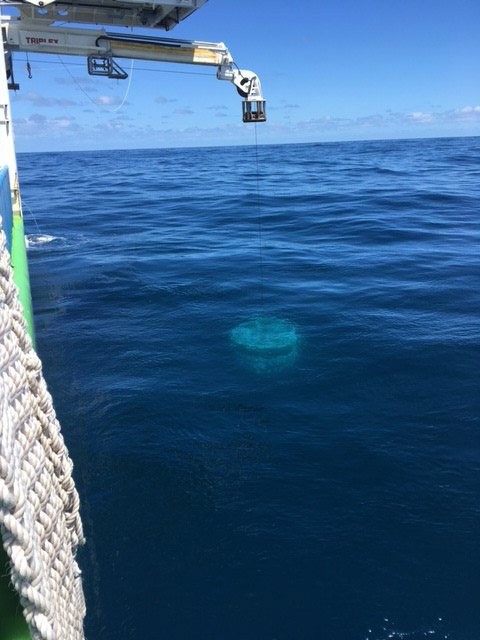Why we study the ocean depths

While the polar wildlife, crystal icescape, roaring winds, and fierce seas of the Southern Ocean make for some excitement on the bridge, all the action for the oceanographers is six floors below in the Ops Room. It’s here where we watch, in real-time, the data continuously streaming in from the CTD as it slowly descends thousands of metres below the sea surface.

We see the expected layering of the ocean as we travel down the water column to the seafloor. At the top, in the Antarctic Surface Waters (AASW), we first find a well-mixed layer that is constantly interacting with the atmosphere and ice above it. This ‘mixed layer’ – usually tens of meters deep in this region – holds lots of dissolved oxygen (constantly equilibrating with and matching oxygen levels of the atmosphere above it). Phytoplankton thrive in the mixed layer, devouring available food, leaving this slab of ocean lower in nutrients than the waters below.
Below the mixed layer the temperature drops below zero, as we find ourselves in the cold AASW remnant from last winter, called ‘Winter Water’. The salt in the seawater lowers the freezing point and we can find temperature minimums around -1.5°C here. This is unanimously the least fun water to sample from the rosette once the CTD is back on board.
As we travel deeper, the properties change rapidly. Over only 100 meters or so, the temperature increases by 2-3 degrees, the ocean becomes drastically saltier, and the amount of oxygen is cut almost in half. We’ve entered a water mass that has travelled great distances to get here: Circumpolar Deep Water. After sinking near Greenland in the North Atlantic, these waters navigated their way down the eastern seaboard of the United States, across the equator, along South America, and are slowly making their way back up towards the surface of the ocean here in the Southern Ocean. While nearly all the oxygen has been consumed by zooplankton and other critters along the way, this several-hundred-meter-thick layer of ocean is chock-full of nutrients it has collected along the way.
Oceanographers are somewhat obsessed with Circumpolar Deep Water – and rightfully so. These relatively warm, salty and nutrient-rich waters have huge implications for the global climate by supplying food to oceanic phytoplankton (which provide oxygen for every second breath we take!) and carry heat towards Antarctica (which holds the equivalent of over 60 meters of global-mean sea level rise in its ice sheets!). So you might imagine how crucial it is to understand how, where, why, and when these waters get to where they’re going and track any changes in the amount of heat or nutrients it holds.
Finally, in the deepest depths of the ocean, we find the densest water on the planet: Antarctic Bottom Water. Originating on the shelf, when freezing sea-ice leaves behind salt in intensely cold water, it overflows down the continental slope and underneath the Circumpolar Deep Water, taking with it the atmospheric properties. The oxygen, carbon dioxide, and heat (yes, heat, even though it’s very cold water) that it carries with it to the bottom of the ocean will spend thousands of years down there. Over 93% of extra heat and carbon that humans have put into the atmosphere since the Industrial Revolution is stowed away in the ocean, and the production and formation of this water is one of the most efficient and effective means of storage. Therefore, we monitor it as closely as possible – even if it means spending two months at sea, having to see whales, seals, penguins, seabirds, icebergs, and auroras.



